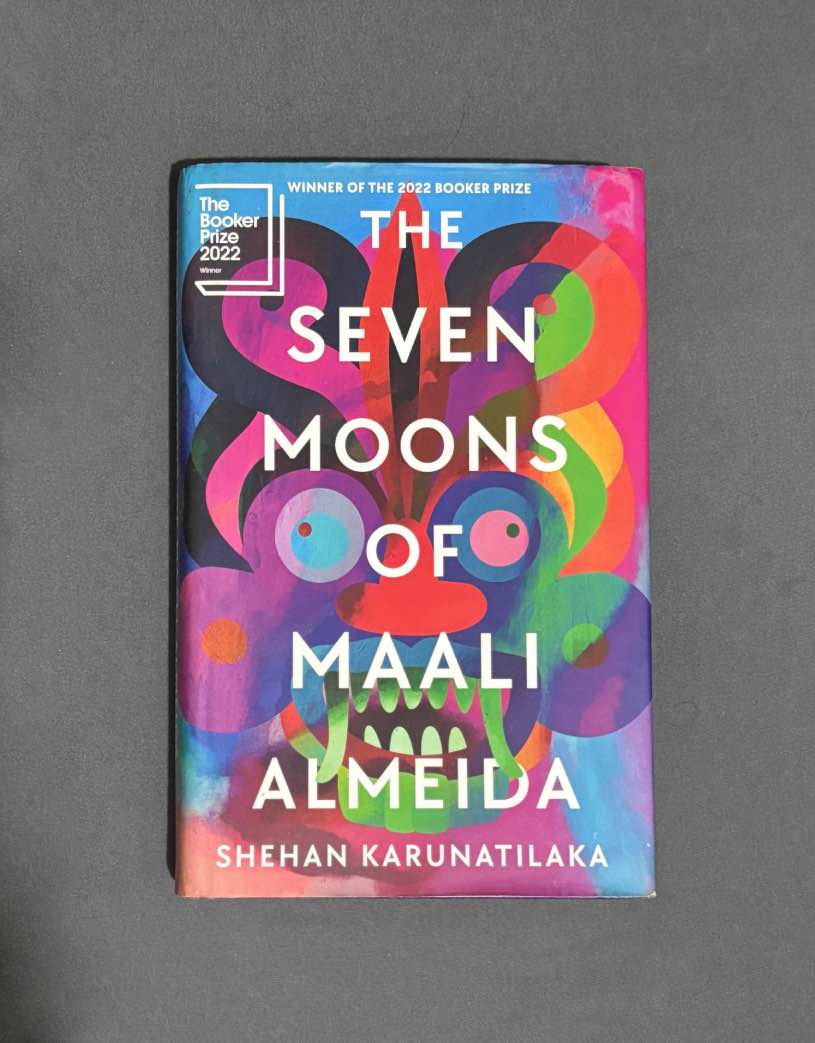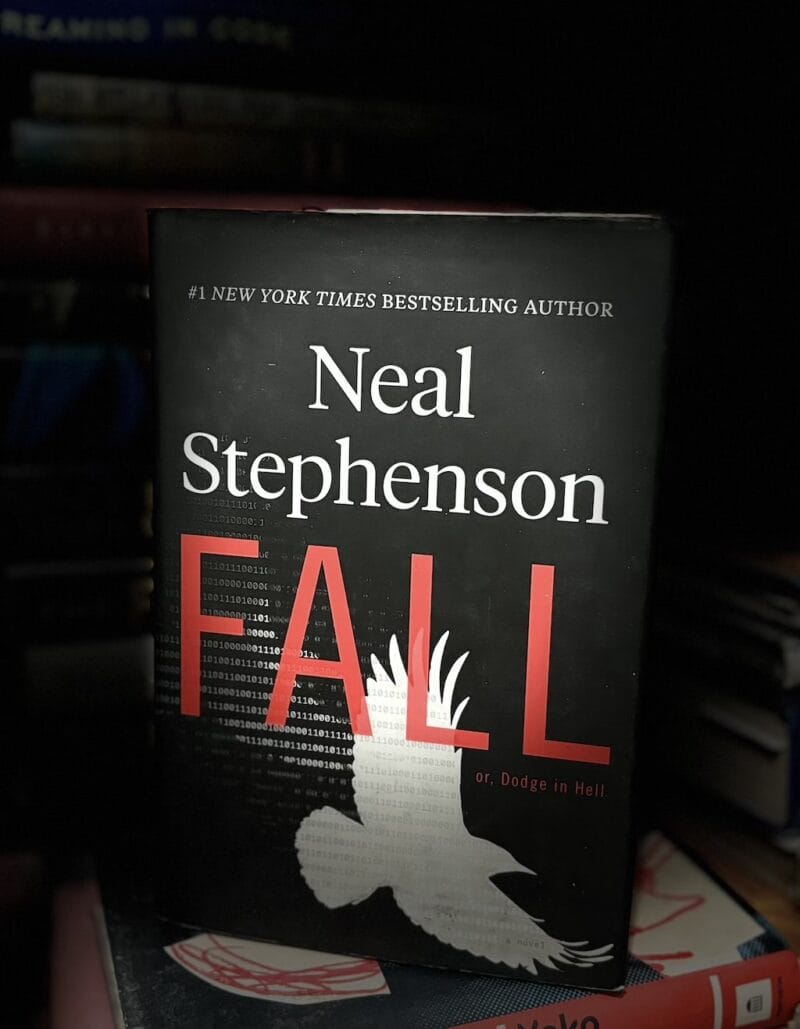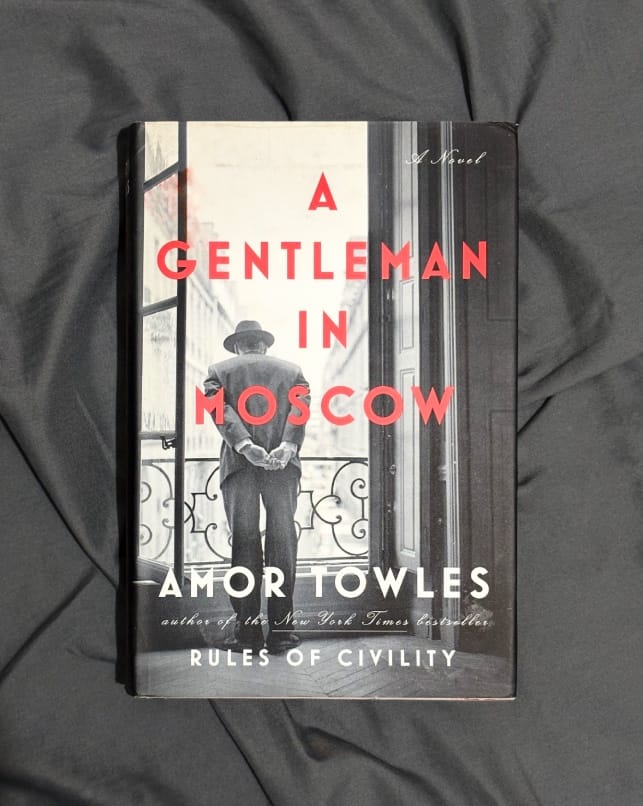In the vibrant yet turbulent setting of wartime Sri Lanka, The Seven Moons of Maali Almeida (2022) by Shehan Karunatilaka explores the intriguing world of the afterlife through the eyes of a deceased war photographer. This satirical and magic-infused novel won the 2022 Booker Prize, captivating readers with its unique blend of humor and political commentary.
The book offers a refreshing take on Sri Lankan history, inviting readers to contemplate both past and present through a ghostly narrative. Karunatilaka’s novel unfolds as Maali Almeida, the protagonist, navigates the afterlife with a mission: to expose a conspiracy through his photographic work. Set against the backdrop of a civil war, the story weaves in elements of mystery and magic realism.
Those intrigued by genres that blend satire with the supernatural will find Karunatilaka’s work especially engaging. The novel strikes a balance between examining historical truths and exploring imaginative possibilities. Reading it promises an exploration of identity, history, and the lingering shadows of conflict in a way that few other books are able to manage.
Narrative Structure and Use of Time

The novel provides a unique storytelling experience by employing a nonlinear narrative style. The seven moons structure defines the time frame in which the events unfold, while flashbacks and shifts in time enrich the storyline with depth and intrigue.
This style immerses readers in the chaotic and unpredictable realities of the protagonist. Events are not sequential, reflecting the complex journey of the central character as he navigates both the afterlife and his unfinished business in the real world. This technique allows exploration of various events simultaneously, offering a multilayered view of Maali’s character and his past.
Flashbacks and time shifts are employed to reveal key information about Maali’s life and the socio-political climate of Sri Lanka. These devices provide insights into Maali’s experiences, relationships, and the tumultuous backdrop against which his story unfolds. Through these temporal shifts, readers gain a broader picture of Maali’s world and his motivations, including the external forces that influenced his fate.
Role of the Seven Moons Structure
In the novel, the concept of the “seven moons” is crucial, providing not only a time frame but a structural element. Maali is afforded seven moons, or seven days, to solve the mystery of his own death. This structure guides the reader through the layers of Maali’s past and present.
The seven moons serve not just as a narrative clock but also an existential framework that shapes Maali’s interactions and decisions. The structure of moons establishes a rhythm that defines the pacing of the narrative.
Depiction of a Unique Afterlife

The novel’s imaginative portrayal of the supernatural guides the reader through an unusual exploration of the afterlife, intricately crafted and blended with elements of the mystical and the mundane. Spirits roam a space reminiscent of a celestial visa office, navigating their post-mortem existence alongside the living. This world transcends traditional ghost stories, replacing familiar ghouls with complex interactions that defy typical underworld depictions.
Magical realism is employed to create a space where ghosts and the living interact fluidly. The protagonist becomes a focal point, engaging in “chats with the dead” to reveal the interconnectedness of the spirit world. By diminishing the stark separation between life and death, the story challenges our standard perceptions and opens new vistas for exploring mortality and the afterlife.
Metaphor of War and Death
Amidst this supernatural setting, the novel mirrors the protagonist’s internal conflicts with the external chaos of the civil war period. Through the lens of magic realism, this portrayal becomes not just a story about ghosts or the underworld but an exploration of unresolved issues and conflicts that cross the boundary between personal and societal struggles.
Maali’s journey reflects his personal battles and the turbulent period in Sri Lanka’s history. The narrative uses the afterlife as a metaphor to convey unspoken truths and hidden fears. Reflections about his death operate on multiple levels, using the supernatural to explore themes about personal morality and national identity.
While many literary treatments of death focus on somber or foreboding tones, this book infuses humor and audacity into its portrayal. Unlike more traditional ghost stories that lean heavily on fear or suspense, this novel offers a fresh take on the afterlife by presenting a more dynamic interaction between the living and the dead, blending reality with the supernatural in a unique way.
Political Satire and Commentary on Sri Lankan Conflict
The novel also functions as a political satire when addressing the complex issues of Sri Lanka’s past. It critically examines the impact of the civil war, the role of media, and broader political allegory within Sri Lankan society. Maali’s journey in the afterlife mirrors Sri Lankans’ struggles with the nation’s conflict.
Vivid portrayals of Colombo’s backdrop highlight the toll political violence takes on relationships. The depiction of loss allows Karunatilaka to explore wider themes by intersecting the personal with the political and providing a poignant commentary on the effects of the nation’s political unrest.
Critique of War, Violence, and Media
Through his novel, Karunatilaka offers a sharp critique of the war’s brutality and the pervasive violence in Sri Lanka during the 1980s. The story uncovers layers of media complicity and bureaucratic indifference. Through Maali’s role as a photographer, haunting images serve as evidence of the unresolved murders that transpired throughout the nation.
The novel also questions media ethics and the power of images to both reveal and conceal truths. By examining how war is reported and remembered, the novel critiques how violence is normalized. The novel portrays media’s role in shaping public perception and its tendency to conceal complex realities.
Political Allegory
The titular seven moons symbolize both the time constraints of Maali and Sri Lanka’s urgency for unveiling truths hidden by political forces. This metaphorical framework serves as a clever representation of the challenges individuals face when navigating a bureaucratic maze intertwined with political agenda.
Karunatilaka employs allegorical elements to focus on the complicated entanglement of diverse political factions, including LTTE and government entities. His narrative questions the efficacy of existing political structures in healing a divided nation. Through the use of satire, the novel portrays the absurdity of political machinations and how they perpetuate national conflict.
Maali Almeida’s Character Analysis
Maali serves as an unreliable narrator of his journey from a flawed but complex human being working as a war photographer to a ghost navigating the afterlife. His narration is characterized by a candidness that simultaneously reveals and hides his true self. He portrays himself as a person struggling with addictions, particularly gambling and what he refers to as “sluttiness,” which further complicates the story by incorporating unreliable elements into his narration.
This unreliability invites readers to question his true intentions and the reliability of his interpretation of events. While navigating a spectral afterlife, the line between honesty and distortion becomes blurred, challenging readers to discern the truth amidst personal biases.
Contradictions as a War Photographer
As a war photographer, Maali embodies contradictions that reflect ethical dilemmas faced in conflict zones. His dual existence as a passionate documentarian (who also happens to be a closet queen) and a self-destructive individual adds depth to his character. He risks his life for the truth, yet he leads a life full of reckless abandon, residing on the fringes of danger.
Maali’s role as photographer often exposes the gruesome realities of war, capturing images that speak to universal truths. He juggles between the chaotic external world and personal turmoil. Despite the string of chaotic parties that punctuate his life, his work highlights his subconscious pursuit of meaning amid destruction. These contradictions paint a picture of a man who seeks order in a world marred by chaos.
Deeper Questions of Ethics and Human Nature
Maali’s story, while steeped in satire and dark humor, raises profound ethical questions. His life, characterized by impulsive decisions and self-centered acts, contrasts sharply with the surrounding devastation. The narrative questions the ethics of survival and the human tendency to confront or evade truth.
Through Maali’s eyes, readers examine human nature’s complexity, pondering whether redemption is possible amidst the chaos. The duality of his intentions challenges simplistic moral classifications. His unexpected detachment from morality prompts reflection on universal questions concerning choices and integrity. With Maali’s ambiguous nature, it encourages a deeper dialogue between ethical relativism and human behavior.
Literary Style and Language
The narrative employs a unique and daring second-person point of view, a literary choice that is both unconventional and strikingly effective. By addressing Maali as “you,” Karunatilaka breaks the fourth wall, creating an intimate and immersive experience that is rare in contemporary fiction.
This narrative style vividly captures the surreal journey of its protagonist, drawing readers directly into his posthumous exploration. This technique disrupts the conventional reader-author relationship, making the audience an active observer or even a participant in the story’s surreal events. The second-person perspective also allows for a nuanced exploration of Maali’s character, making his experiences and revelations profoundly personal while maintaining a sense of universality.
Prose cadences throughout the novel reflect the ambition and scope of Karunatilaka’s storytelling, harmoniously blending humor with profound themes, achieving an intricate balance between wit and gravitas. The narrative is imbued with a sardonic tone, punctuating profound moments of introspection with humor. By juxtaposing comedic undertones with a ghostly narrative, the author invites readers to explore weighty topics through a lens of irony.
Selected Passage with Analysis
You want to ask the universe what everyone else wants to ask the universe. Why are we born, why do we die, why anything has to be. And all the universe has to say in reply is: I don’t know, arsehole, stop asking. The Afterlife is as confusing as the Before Death, the In Between is as arbitrary as the Down There. So we make up stories because we’re afraid of the dark.
Pages 196-197, The Seven Moons of Maali Almeida by Shehan Karunatilaka
In this passage, Shehan Karunatilaka explores existential themes such as the search for meaning in life and death, the arbitrary nature of existence, and the human need for transcendence. The protagonist’s questions to the universe reflect universal concerns about life’s purpose, while the universe’s response emphasizes the futility of seeking answers to these unknowable questions.
The tone is irreverent and darkly humorous, contrasting the profundity of existential musings with blunt, coarse language. This casual dismissal of deep philosophical questions creates an absurdist effect, aligning the reader with the protagonist’s confusion while highlighting the futility of humanity's quest for meaning. The tone also lends the passage a postmodern edge, poking fun at the seriousness with which such questions are often treated.
The narrative style, which is conversational, direct, and self-aware, further enhances the absurdity of existence. By framing life, death, and the afterlife as equally confusing, the author effectively conveys the arbitrary nature of existence and the human tendency to craft stories to ward off the fear of uncertainty and the unknown. This approach makes the passage relatable and thought-provoking.
Further Reading
Shehan Karunatilaka wins the Booker Prize 2022 for ‘The Seven Moons of Maali Almeida’ by The Booker Prizes
Booker Prize 2022 winner The Seven Moons of Maali Almeida is compelling about conflict – but not a simple read by Martin Chilton, The Independent
It’s obvious why this sensational novel won the Booker Prize by Helen Elliott, The Sydney Morning Herald
The Double Afterlife of Maali Almeida by Richard Simon, The Emigre




